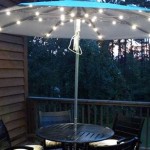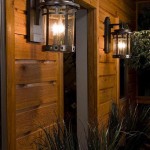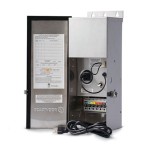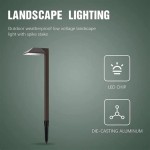Outdoor Lighting Circuit Diagram: A Guide to Understanding the Essentials
Outdoor lighting is a vital part of enhancing the aesthetics and safety of any property. It creates a welcoming ambiance, provides security, and extends the usability of outdoor spaces during evening hours. To effectively plan and install outdoor lighting, a clear understanding of the circuit diagram is crucial. This article will delve into the essential components of an outdoor lighting circuit diagram, providing a comprehensive overview of its elements and their functions.
1. Identifying the Power Source
The starting point of any outdoor lighting circuit is the power source. This can be either a main power supply coming from the house's electrical panel or a dedicated outdoor sub-panel. The diagram should clearly indicate the type of power source, its voltage, and any relevant safety measures. It is important to note that outdoor lighting circuits typically require a ground fault circuit interrupter (GFCI) to prevent electrical shocks in case of a ground fault.
2. Understanding Circuit Breakers and Fuses
Circuit breakers and fuses play a vital role in protecting the electrical circuit from overloads and short circuits. The outdoor lighting circuit diagram should depict the location and ratings of the circuit breaker or fuse responsible for the specific circuit. These devices are typically located in the electrical panel and act as safety measures to prevent damage to the wiring and electrical equipment.
3. Tracing the Path of Wiring
The circuit diagram serves as a visual guide to the path of wiring from the power source to the lighting fixtures. It should clearly indicate the type of wire used (e.g., THHN, UF), the wire gauge, and any conduit or cable management systems employed. The diagram should also specify the number of wires in the circuit, including the hot wire (typically black), the neutral wire (typically white), and the ground wire (typically green or bare copper). The diagram should also indicate any junction boxes or other components used to connect and protect the wiring.
4. Analyzing Lighting Fixtures and Controls
The outdoor lighting circuit diagram should clearly define the type, location, and specifications of each lighting fixture in the circuit. It should include details such as the wattage, voltage, and type of bulb (e.g., LED, incandescent, halogen). The diagram should also specify the type of controls used for each fixture, including switches, dimmers, and timers. These controls allow for customization of the lighting scheme and energy efficiency.
5. Evaluating Switching Mechanisms
Outdoor lighting circuits can incorporate various switching mechanisms to control the fixtures. The diagram should clearly indicate the location of each switch, the type of switching mechanism (e.g., single-pole, three-way), and its function. The diagram should also indicate any relays or other electrical components used for remote control or automated lighting operations.
6. Incorporating Sensors and Automation
Modern outdoor lighting systems often integrate sensors and automation features for enhanced convenience, security, and energy efficiency. The circuit diagram should clearly depict the location and function of any sensors used, such as motion sensors, photocells, or timers. It should also specify any automation systems used to control the lights, such as smart home hubs or programmable controllers.
7. Safety and Compliance Considerations
The outdoor lighting circuit diagram should adhere to all relevant electrical codes and safety regulations. It should clearly indicate the proper grounding and bonding techniques, as well as the use of ground fault circuit interrupters (GFCIs) for safety in wet or outdoor environments. The diagram should also specify any special requirements or considerations for the specific location and environmental conditions.
8. Using Circuit Diagram Software
Specialized circuit diagram software can be used to create professional and accurate representations of outdoor lighting circuits. These software programs offer user-friendly interfaces, pre-built symbols, and automatic wiring placement tools. Utilizing such software helps in creating easily understandable and comprehensive diagrams for installation and maintenance purposes.
Understanding the components and structure of an outdoor lighting circuit diagram is essential for efficient installation, maintenance, and troubleshooting of any outdoor lighting system. By carefully analyzing the diagram, professionals and homeowners can ensure a safe, functional, and aesthetically pleasing outdoor lighting environment.

Wiring Installation Coastal Source

How To Install Low Voltage Outdoor Landscape Lighting The Garden Glove

How To Install Low Voltage Outdoor Deck Lighting

Installation Help For Outdoor Lighting

Outdoor Lighting How To Design A Garden Scheme Pt Iii

Zenith Motion Sensor Wiring Diagram Outside Lights To Handyman Wire Home Electrical

How To Wire Outdoor Low Voltage Lighting Part 2

How To Wire Outdoor Low Voltage Lighting Part 3

Outdoor Garden Led Solar Light Circuit

Low Voltage System Layout Landscape Lighting Supply Company







